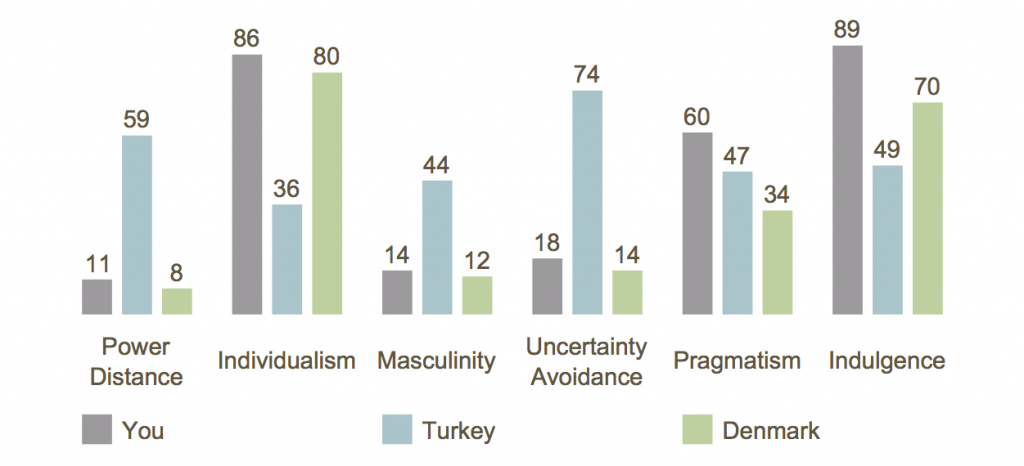Cultural Differences and How to Manoeuvre
 I am facing an interesting challenge.
I am facing an interesting challenge.
The Sabanci University in Istanbul has engaged me to deliver two workshops to Turkish software companies preparing for international expansion. The activity is an integrated part of the UR-GE program sponsored by the Turkish Ministry of Economy and The Turkish Export Council aimed at growing the Turkish economy to the G10 by 2023. Turkey is currently number 17. Making it to the G10 would mean taking the position now held by France. The annual economic growth would have to surpass 7%, surpassing competing economies such as Mexico, South Korea and Indonesia. Making it to the G10 would also mean that in 2023 the Turkish economy would represent >3,75% of global demand where the share today is 0,77%.
International expansion means finding, winning, making, keeping and growing happy customers in other countries. There are many ways to do that, but the ultimate objective is always the same: achieve global market leadership in one or more specific market segments.
The purpose of the workshops is to give the software companies a framework for selecting and penetrating foreign markets in a systematic and manageable way. The framework must help the software companies find an approach that is affordable, repeatable and scalable. Providing this framework is not a big challenge.
The foreign cultural environment
I am also preparing the software companies for the substantial cultural differences that they will face when moving outside the comfort of their domestic market. That is a big challenge. It is really hard to comprehend the impact of culture if you have never been exposed to foreign cultures in real life. I have done business all over the world for the last 35 years, but the attendees in my workshops have not.
However, the biggest challenge is that my own cultural background is very different from the cultural background of the people I am helping. My job is to help prepare Turkish business people (with a very different cultural heritage) for the challenges they will be facing when doing business in Italy, France, Germany, Iran, Saudi Arabia, Japan, the UK, the USA etc. etc.
Acknowledging that there are differences is a good start, but how do you “package” these differences so you can have an organized discussion and learn simple principles that can help you when meeting with foreign businesspeople?
The Hofstede Centre provides the tool that I use. The tool enables me to assess the differences between myself, my home culture and the foreign culture based on the role I am about to perform.

From the Hofstede Cultural ComPass Report made for me (Danish) in the role of a knowledge transfer person to a Turkish class.
The six cultural dimensions
Hofstede operates with six cultural dimensions:
Power distance is defined as the extent to which the less powerful members of society accept that power is distributed unequally.
Individualism (Individualist versus Collectivist)
Collectivism: people belong to in-groups (families, organisations, etc.) who look after them in exchange for loyalty.
Individualism: people only look after themselves and their immediate family. (different in the USA and The Nordics)
Masculinity: the dominant values in society are achievement and success.
Femininity: the dominant values in society are caring for others and quality of life.
Uncertainty Avoidance: The extent to which people feel threatened by uncertainty and ambiguity and try to avoid such situations.
Pragmatism (Pragmatic versus Normative): The extent to which people show a pragmatic or future-oriented perspective rather than a normative or short-term point of view.
Indulgence (Indulgence versus Restraint): The extent to which people try to control their desires and impulses. Relatively weak control is called “Indulgence” and relatively strong control is called “Restraint”.
Selling versus Buying
The rules in business are simple. When you want to sell something and you have competition, then you must adapt to the buyer’s culture. When you need to buy something then you expect the seller to adapt to your culture.
In future posts, I will translate the six cultural dimensions into practical implications in a business relationship context.








